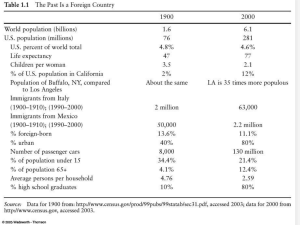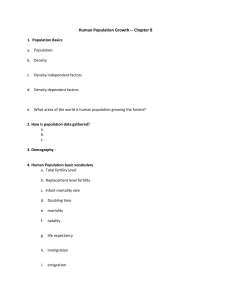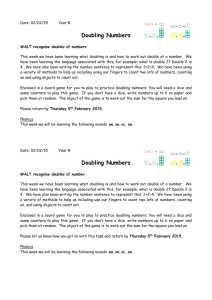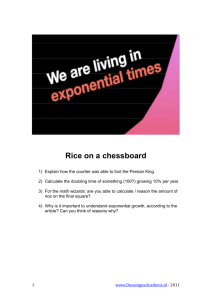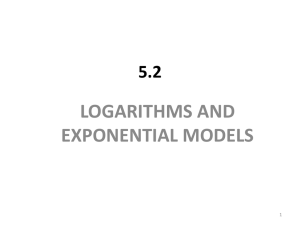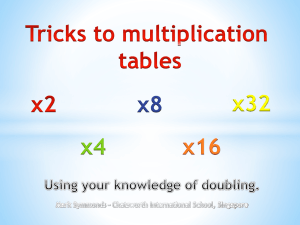Answer Sheet – Introduction to Ecological Principles Laboratory
advertisement
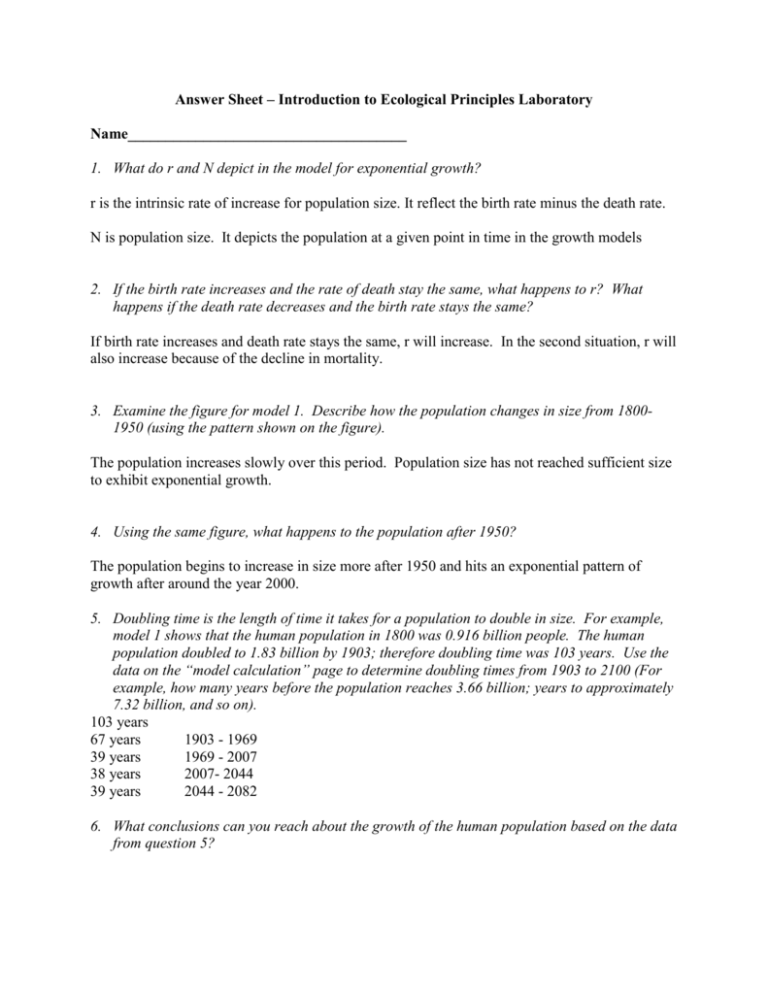
Answer Sheet – Introduction to Ecological Principles Laboratory Name_____________________________________ 1. What do r and N depict in the model for exponential growth? r is the intrinsic rate of increase for population size. It reflect the birth rate minus the death rate. N is population size. It depicts the population at a given point in time in the growth models 2. If the birth rate increases and the rate of death stay the same, what happens to r? What happens if the death rate decreases and the birth rate stays the same? If birth rate increases and death rate stays the same, r will increase. In the second situation, r will also increase because of the decline in mortality. 3. Examine the figure for model 1. Describe how the population changes in size from 18001950 (using the pattern shown on the figure). The population increases slowly over this period. Population size has not reached sufficient size to exhibit exponential growth. 4. Using the same figure, what happens to the population after 1950? The population begins to increase in size more after 1950 and hits an exponential pattern of growth after around the year 2000. 5. Doubling time is the length of time it takes for a population to double in size. For example, model 1 shows that the human population in 1800 was 0.916 billion people. The human population doubled to 1.83 billion by 1903; therefore doubling time was 103 years. Use the data on the “model calculation” page to determine doubling times from 1903 to 2100 (For example, how many years before the population reaches 3.66 billion; years to approximately 7.32 billion, and so on). 103 years 67 years 1903 - 1969 39 years 1969 - 2007 38 years 2007- 2044 39 years 2044 - 2082 6. What conclusions can you reach about the growth of the human population based on the data from question 5? The rate of doubling decreased by 40% in the 20th century and decreased by over 60% relative to the 1800 - 1903 rate before stabilizing at doubling every 38 - 39 years. 7. Examine the figure for model 2. Describe how the population changes in size from 18001950 (using the pattern shown on the figure). There was no change in the rate of increase 1800 - 1950 because r is unchanged from the first model. 8. Using the same figure, what happens to the population after 1950? The population began to increase in numbers greater than it had 1800 - 1950 but did not reach the exponential rate of increase observed in Model 1. 9. How does model 2 compare to model 1? The change in r through the reduction in birth rate led to a decrease in the increase of human population size seen in Model 1 but the shape of the figure suggests the population could still achieve a J-shaped pattern of growth 10. Use the data on the “model calculation” page for model 2 to determine doubling times. 103 years 67 years 45 years 70 years 1903 - 1969 1969 - 2013 2013 - 2082 11. What conclusions can you reach about the growth of the human population based on the data from question 10? Does the prediction for human population growth differ between the two models? The prediction for population growth does change with a reduction in r. This is supported by the increase in the doubling rate after 2013. 12. Examine the figure for model 3. Describe how the population changes in size from 18001950 (using the pattern shown on the figure). Follows the same pattern as the other models because the intrinsic rate of increase, r, has not changed from the previous models. 13. Using the same figure, what happens to the population after 1950? The rate of increase shown in Model 3 is even lower than that observed in Model 2 but the population could still reach a point where the prediction would be a J-shaped pattern of growth. 14. Use the data on the “model calculation” page to determine doubling times. 103 years 67 years 1903 - 1969 50 years 1969 - 2018 Would not double again before 2100. Would not double again until 2124. 15. What conclusions can you reach about the growth of the human population based on the data from question 14? How does reducing r to 0.005 affect population growth relative to the other models? Population growth at the lower rate of increase in Model 3 would slow growth considerably if reduction in birth rate (since increasing the mortality rate is not desirable) continued. Population growth at r = 0.005 would reduce the rate further still. 16. Examine the figure for model 4. Describe how the population changes in size from 18001950 (using the pattern shown on the figure). Population size continues to increase at the initial r. 17. Using the same figure, what happens to the population 1950 - 2000? The population continued to growth exponentially with the increase in numbers escalating markedly 18. What happens to the population after the year 2000? Population size dropped steadily toward carrying capacity but still had not reached carrying capacity by 2100. 19. Use the data on the “model calculation” page to determine doubling times. 103 years 67 years 1903 - 1969 The population never doubled again after 1969. 20. What happens to population size beyond the year 2000 if the carrying capacity is reduced to 1 billion people? The rate of decline in population size would be much more dramatic given that this value is 20% of the carrying capacity of 5 billion. 21. What do you think that the logistic growth model tells us about future changes in human population growth? Do you think that the human population can continue without constraint, even if r decreases as a result of declining birth rates? This is for you to decide.
